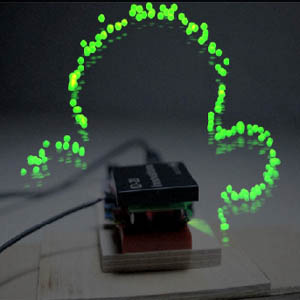Depth of Field: Discursive design research through film
DOI:
https://doi.org/10.7577/formakademisk.189Keywords:
interaction design, product design, discursive design, emerging technologies, RFID, film, reflective, communication, mediationAbstract
This article is about the role of film in interaction and product design research with technology, and the use of film in exploring and explaining emerging technologies in multiple contexts. We have engaged in a reflective design research process that uses graphical, audiovisual, and time-based media as a tool, a material and a communicative artefact that enables us to approach complex, obscure and often invisible emerging technologies. We give a discursive account of how film has played an intricate role in our design research practice, from revealing the materiality of invisible wireless technology, to explaining complex technical prototypes, to communicating to a public audience through online films that may fold broader social and cultural discourses back into our design research process. We conclude by elaborating on discursive design approaches to research that use film as a reflective and communicative medium that allows for design research to operate within a social and cultural frame.
Published
2010-07-04
How to Cite
Arnall, T., & Martinussen, E. S. (2010). Depth of Field: Discursive design research through film. FormAkademisk, 3(1). https://doi.org/10.7577/formakademisk.189
Issue
Section
Articles
License
Authors who publish with this journal agree to the following terms:
- Authors retain copyright and grant the journal right of first publication with the work simultaneously licensed under a Creative Commons Attribution 4.0 License that allows others to share the work with an acknowledgement of the work's authorship and initial publication in this journal.
- Authors are able to enter into separate, additional contractual arrangements for the non-exclusive distribution of the journal's published version of the work (e.g., post it to an institutional repository or publish it in a book), with an acknowledgement of its initial publication in this journal.
- Authors are permitted and encouraged to post their work online (e.g., in institutional repositories or on their website) prior to and during the submission process, as it can lead to productive exchanges, as well as earlier and greater citation of published work (See The Effect of Open Access).
- The author(s) must manage their economic reproduction rights to any third party.
- The journal makes no financial or other compensation for submissions, unless a separate agreement regarding this matter has been made with the author(s).
- The journal is obliged to archive the manuscript (including metadata) in its originally published digital form for at least a suitable amount of time in which the manuscript can be accessed via a long-term archive for digital material, such as in the Norwegian universities’ institutional archives within the framework of the NORA partnership.
The material will be published OpenAccess with a Creative Commons 4.0 License which allows anyone to read, share and adapt the content, even commercially under the licence terms:
This work needs to be appropriately attributed/credited, a link must be provided to the CC-BY 4.0 licence, and changes made need to be indicated in a reasonable manner, but not in any way that suggests that the licensor endorses you or your use.



